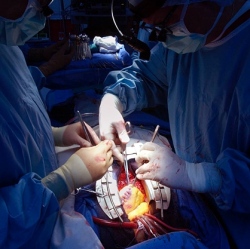
Seattle’s Presage Biosciences has developed a device which introduces small amounts of different chemotherapy drugs into a patient’s tumor. The tumor is inspected after removal and the most effective of the drugs are used for post-surgical chemotherapy, resulting in more efficient, personalized cancer treatments. The new device is awaiting FDA approval, but is currently being used to facilitate development of new chemotherapy drugs.
One of the largest challenges faced by oncologists is finding an effective treatment for a particular patient that doesn’t cause the patient undue suffering. According to Dr. Jim Olson, a pediatric neuro-oncologist and scientist at Seattle Children’s Hospital and the Fred Hutchinson Cancer Research Center. “I am sick of writing prescriptions for kids to give them experimental therapies that have a 94 percent chance of failing and that will more than likely make them sick,” says Olson, who is also the founder of Presage.
Presage’s new technology injects minute amounts ("about a fifth of a raindrop") of different cancer drugs into a tumor while it is still in the body. Once the tumor is removed, doctors can examine it to see which drugs killed its cancerous cells. The drugs that work best within the tumor can then be given in larger doses intravenously to fight the cancer throughout the body.
The picture above illustrates the clinical use of the new test. On the left is a photograph of a cross-section of a lung cancer tumor. Some time before removing the tumor, Presage’s new device was used to compare various treatments – a standard chemotherapy regime, experimental drug A, experimental drug B, and a combination of A and B.
